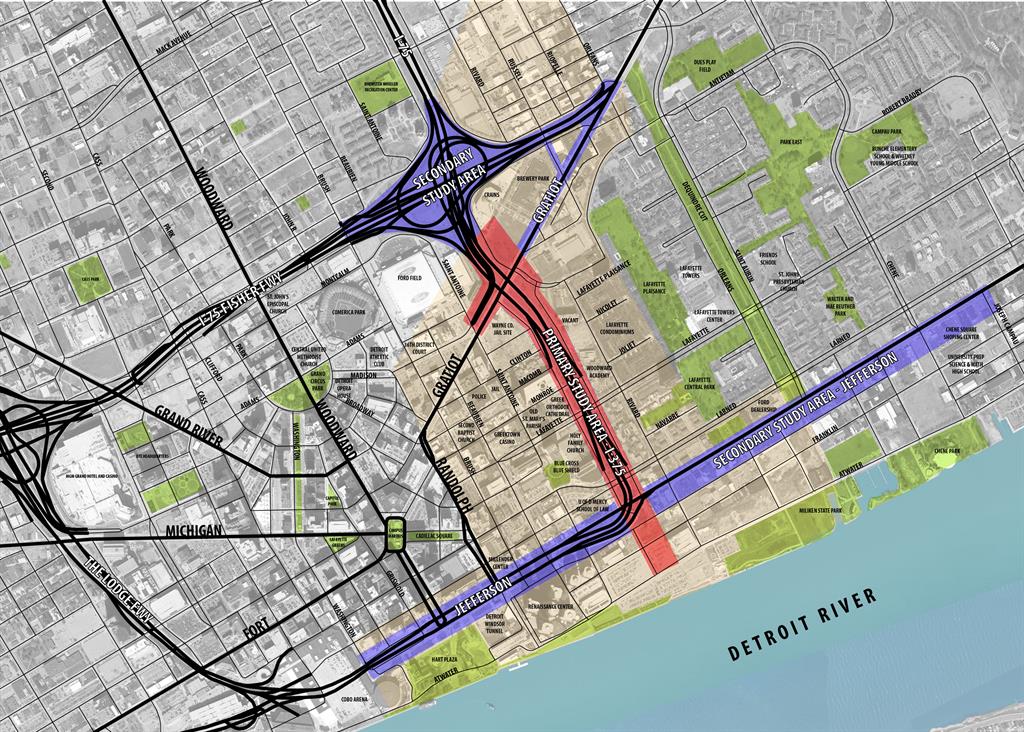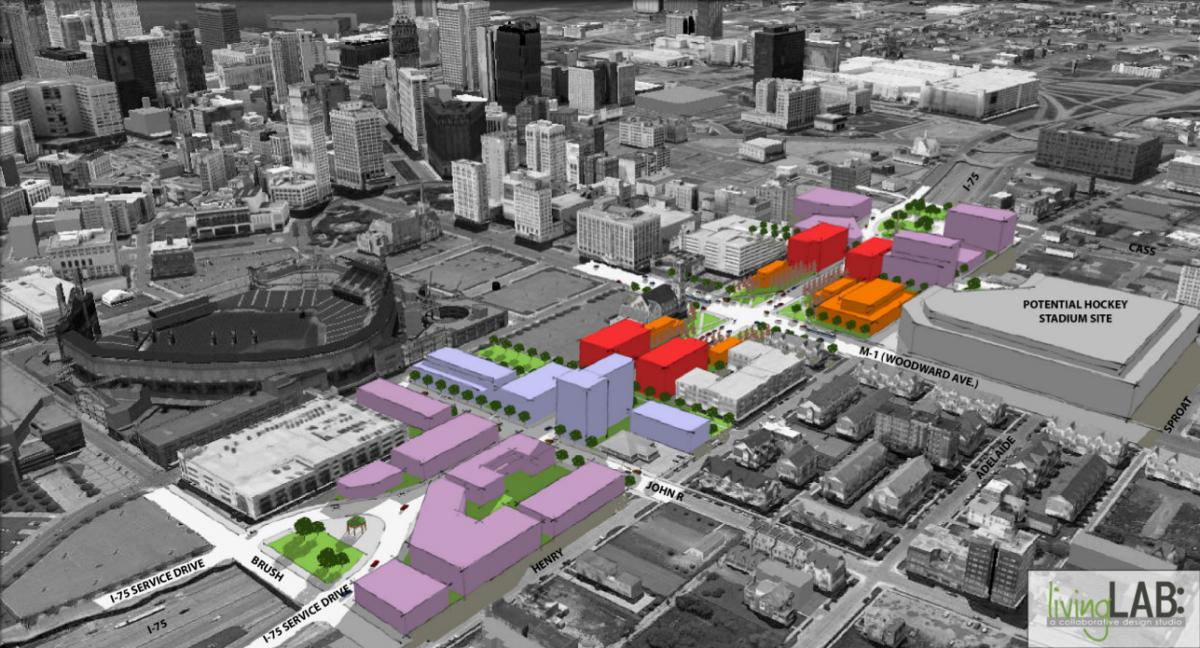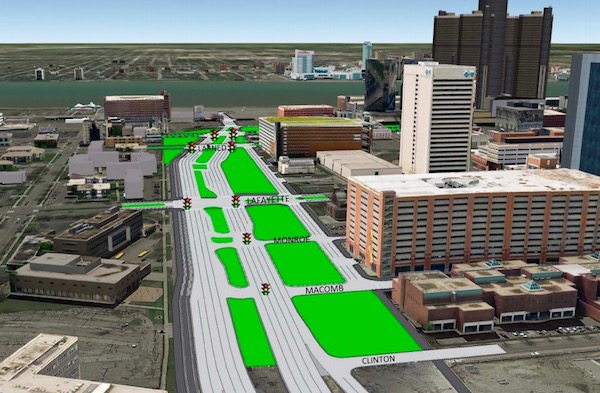- Who We Are
- What We Do
- Our Issues
- Our Projects
- Sprawl Retrofit
- Highways to Boulevards
- CNU/ITE Manual
- Health Districts
- The Project for Code Reform
- Lean Urbanism
- LEED for Neighborhood Development
- Missing Middle Housing
- Small-Scale Developers & Builders
- Emergency Response
- HUD HOPE VI
- Rainwater in Context
- Street Networks
- HUD Finance Reform
- Affordable Neighborhoods
- Autonomous Vehicles
- Legacy Projects
- Build Great Places
- Education & Trainings
- Charter Awards
- Annual Congress
- Athena Medals
- Resources
- Get Involved
- Donate
- Membership
- Public Square
History and Context
I-375 is a 1.06-mile spur that pierces Detroit's downtown. Begun in 1959, this 4-lane, below-grade freeway disconnected Detroit's Riverfront, Greektown, Eastern Market, and Stadium districts. Its legacy is tied to failed urban renewal efforts that destroyed thriving black neighborhoods known for their thriving nightlife in the early 1900's from its abundant jazz and blues nightclubs. One of these jazz clubs, called Paradise Theatre, has been renovated into Orchestra Hall. According to the U.S. Census, Detroit's population shrunk from a high of around 2 million people in 1959 to a population of about 700,000 today. Additionally, according to Michigan Department of Transportation (MDOT), the vehicle usage of I-375 has shifted markedly. Since 2009, annual daily travel averages have decreased more than 13% from 14,112 and 53,900 vehicles at the Jefferson and I-75 segments to 17,101 and 41,512 today.
Proposal
Detroit is facing a number of growing challenges, including the dramatic loss of its tax base over the past four decades. With the public unraveling of the City's financial woes, namely its $18.5 billion bankruptcy, the City is in the midst of a critical overhaul effort. This effort is guided by a comprehensive economic development plan called Detroit Future City, which calls for smarter land use planning and economic incentives. Many advocates and policy officials agree that the removal of I-375 would fit into this plan if turned into a boulevard. MDOT Director Kirk Steudle is open to study this alternative and has stated that such a project could open up about 12 acres for development.

Current Situation
In December 2013, Detroit's Downtown Development Authority moved forward with a planning contract to study six alternatives for I-375 from Gratiot Avenue to Atwater Street. These range from reparing or replacing the existing structure to putting a walkable boulevard in its place, with prices between $40 million and $80 million. The plan is precipitated by local organizations like the Detroit RiverFront Conservancy who suggests that Detroit follow the national trend in urban freeway removal and convert I-375 into an at-grade, pedestrian friendly thoroughfare.
CNU supports the growing community of voices around removing the I-375. The business community would stand to gain from the increase in foot traffic, and a boulevard would connect Detroit's fastest growing neighborhoods and allow citizens to engage with the Riverfront more easily. Lastly, the city would be removing an eyesore from its downtown landscape and an opportunity to turn a page into a new era of transportation planning that fits in with its bicycle, rapid transit, and new light rail infrastructure.

In December 2017, MDOT has formally committed to the removal of I-375 through downtown Detroit. The project probably will not commence until around 2022, as MDOT explores design alternatives. Currently, it has settled on two options, both variations on a boulevard design. However, both designs still cater excessively to automobiles and very much resemble the freeway they will replace. Each features a total of eight travel lanes (four northbound and four southbound), which exceeds the number on the current highway. MDOT needs to consider more pedestrian-oriented designs, if Detroit is to reap the full benefits of highway removal.
The Michigan Department of Transportation plans to spend $6 million in 2020-2021 redesigning I-375 as an at-grade boulevard that could open acres of land in downtown Detroit and then the state transportation agency is going to shelve the project for at least six years. The current administration has yanked the $180 million in MDOT's five-year capital projects for rebuilding the mile-long freeway spur that has been a regional priority for nearly a decade.



















